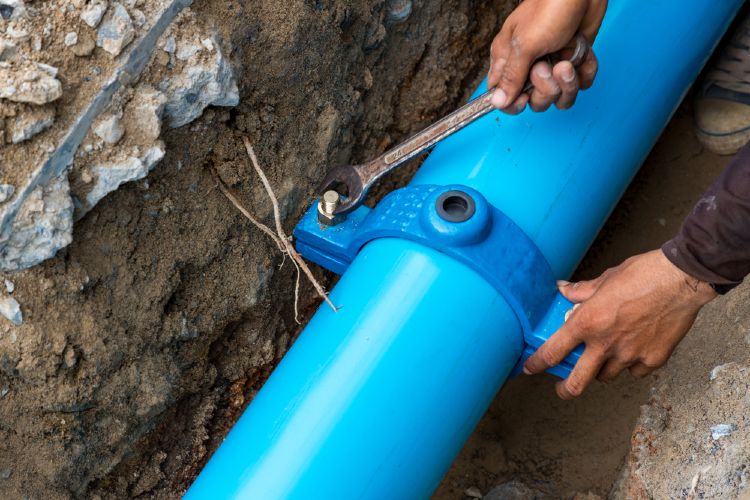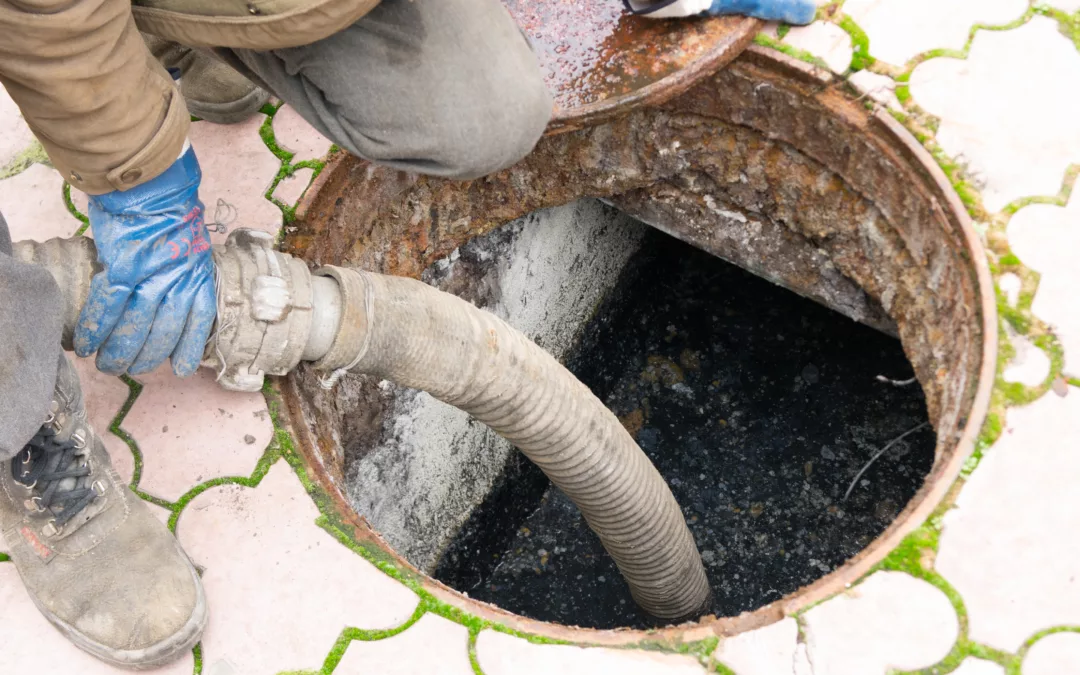Sewer systems are an essential part of modern infrastructure, carrying away wastewater from our homes and businesses. However, they often come with misconceptions and fears, primarily related to sewer gas.
Understanding the composition of sewer gas and debunking common myths about its dangers is the purpose of this article. In addition, we will explore factors affecting sewer gas exposure, and discuss how to identify and address sewer odor issues.
Understanding Sewer Gas Composition
Sewer gases, composed of various noxious compounds, originate primarily from the decomposition of organic matter in sewage and wastewater systems. The main factors contributing to their formation are:
- Organic Material Breakdown: The primary source of sewer gases is the breakdown of organic substances like human waste, food particles, and other organic debris within sewage. This decomposition process releases volatile compounds into the sewer system.
- Bacterial Activity: Anaerobic bacteria thriving in the absence of oxygen play a significant role in breaking down organic matter. As they metabolize organic substances, they produce gases as metabolic byproducts.
- Chemical Reactions: Sewer systems contain various chemicals, including detergents, cleaning agents, and industrial waste. These chemicals can interact with organic matter, leading to the generation of additional gases.
- Fats, Oils, and Grease: Accumulations of fats, oils, and grease (commonly known as FOG) in sewer lines can trap organic debris and encourage the growth of anaerobic bacteria. This exacerbates the production of sewer gases.
- Decomposing Roots: Tree roots that infiltrate sewer pipes can also contribute to sewer gas production as they decompose and interact with organic material.
These gases primarily include methane, hydrogen sulfide, carbon dioxide, and traces of nitrogen compounds. The foul odor often associated with sewer gases is largely due to hydrogen sulfide, which gives off the characteristic “rotten egg” smell.
While some sewer gases are flammable and potentially toxic in high concentrations, proper ventilation and maintenance are crucial for minimizing their risks and ensuring safe sewer systems.

What we often refer to as “sewer gas” is actually a mixture of various gases that can accumulate within sewer systems. To better comprehend its potential dangers, it’s essential to know what sewer gas is composed of:
- Methane: Methane is the primary component of sewer gas, making up a significant portion of its composition. It is a flammable gas that can ignite in the presence of an open flame.
- Hydrogen Sulfide: Another major component is hydrogen sulfide (H2S), which gives sewer gas its distinctive, unpleasant odor of rotten eggs. While H2S can be highly toxic in high concentrations, it is typically found in relatively low levels in sewer gases.
- Carbon Dioxide (CO2): Carbon dioxide is present in sewer gas, but it is usually not a cause for concern, as it is not harmful in the low concentrations found in sewer systems.
- Nitrogen Compounds: Small amounts of nitrogen compounds may also be present, but they are generally not a primary concern regarding health risks.
Debunking Common Sewer Gas Dangers and Sewer Odor Myths
Myth 1: Sewer gas is toxic and immediately harmful
Fact: Sewer gas does contain some toxic components, such as hydrogen sulfide, but the concentrations typically encountered in residential settings are not immediately harmful. Short-term exposure to low levels of sewer gas is unlikely to cause severe health problems. However, prolonged exposure can be irritating and may cause mild symptoms like headaches or nausea.
Myth 2: Breathing sewer gas can lead to serious health issues
Fact: While it’s true that high concentrations of sewer gas, especially hydrogen sulfide, can pose health risks, the levels typically found in well-ventilated areas are not typically a cause for concern. However, individuals with pre-existing respiratory conditions or sensitivities may experience discomfort at even lower concentrations. It’s essential to address any persistent sewer odors to ensure a healthy living environment.
Myth 3: Sewer gas exposure is always detectable by smell
Fact: While sewer gas often emits a distinctive odor due to the presence of hydrogen sulfide, not all sewer gas leaks are immediately detectable by smell. Some sewer gas leaks may be odorless, especially if the gas is escaping from concealed or hard-to-reach areas. Relying solely on your sense of smell to detect sewer gas is not a reliable safety measure.
Factors Affecting Sewer Gas Exposure
Several factors can influence the level of sewer gas exposure in your home or business:
- Ventilation: Adequate ventilation is crucial in reducing the concentration of sewer gas indoors. Properly designed and maintained ventilation systems help prevent gas buildup.
- Temperature and Pressure: Changes in temperature and pressure can affect the movement of sewer gases. For instance, negative pressure in a building can draw sewer gas indoors. Ensuring a well-sealed plumbing system can mitigate this risk.
- Plumbing Maintenance: Regular maintenance of your plumbing system can prevent leaks and reduce the likelihood of sewer gas entering your living or working space.
Identifying and Addressing Sewer Odor Issues
If you notice sewer odors in your home or business, it’s essential to take action promptly. Here are some steps to help identify and address sewer odor issues:
- Check Traps: Dry plumbing traps can allow sewer gas to enter your property. Ensure that all drains have water-filled traps to act as a barrier against gas intrusion.
- Inspect Vents: Check your plumbing vents on the roof for blockages or damage. Blocked vents can lead to negative pressure, drawing sewer gas indoors.
- Seal Cracks: Inspect your plumbing system for any cracks or leaks and promptly repair them to prevent gas leaks.
- Professional Inspection: If sewer odors persist despite your efforts, consider hiring a professional plumber to inspect your plumbing system thoroughly.
- Ventilation: Ensure proper ventilation in areas where sewer gas may accumulate, such as basements or crawl spaces.
Sewer Gas as a Homeowner Concern
Sewer gas, while often feared, is not an immediate health hazard in most residential or commercial settings. Understanding its composition, debunking common myths, and addressing factors that can affect its exposure are essential steps in maintaining a safe living or working environment.
If you ever encounter persistent sewer odor issues, we encourage you to contact us to ensure the integrity of your plumbing system and ventilation. By taking these precautions, you can enjoy the benefits of a functioning sewer system without undue worry about sewer gas dangers.
Our team of experienced professionals at NW Sewer & Drain can provide you with a variety of pipe inspection, cleaning, repair, and replacement services that can maintain, rehabilitate, and restore your pipes to their proper function.
Latest Insights on Sewer Gas and Odor Management
In the ever-evolving realm of sewer systems and gas management, staying informed is key to ensuring the safety and well-being of your home or business. Recent research sheds light on the composition of sewer gas and debunks common myths surrounding its dangers, offering valuable insights for homeowners and professionals alike.
One notable revelation is the presence of methane, hydrogen sulfide, and carbon dioxide in sewer gas, with hydrogen sulfide contributing to its distinct odor. While concerns about sewer gas toxicity persist, studies suggest that low concentrations typically encountered in residential settings pose minimal immediate health risks. However, individuals with respiratory conditions should remain vigilant, as prolonged exposure may lead to mild symptoms.
Furthermore, advancements in odor detection and mitigation strategies emphasize the importance of proactive maintenance and ventilation. Regular inspection of plumbing systems, checking for leaks, and ensuring adequate ventilation can help prevent sewer gas buildup and address odor issues effectively. By staying informed and taking proactive measures, homeowners can maintain a safe and comfortable living environment free from the fear of sewer gas dangers.
Frequently Asked Questions
Sewer gas, often recognized by its distinct “rotten egg” smell, is a mixture of various gases produced by the decomposition of organic materials in sewage systems. While it’s a common issue in many homes, understanding its implications and how to address it is crucial. Here are some frequently asked questions about sewer gas:
1. What is sewer gas?
Sewer gas is a mix of gases, mainly hydrogen sulfide (the rotten egg smell), methane, and ammonia. It comes from decaying waste in your plumbing or sewer system.
2. Why does my house smell like sewer gas?
If you’re getting that nasty rotten egg smell, it’s likely from a dry drain trap, a cracked pipe, or a blocked vent. These let sewer gas sneak into your home instead of staying in the pipes where it belongs.
3. Is sewer gas dangerous?
Yep, it can be. Low exposure might just cause headaches or nausea, but high levels can lead to dizziness, breathing problems, or even more serious health issues. Plus, methane is flammable, so it’s not something to ignore.
4. How do I get rid of sewer gas in my home?
First, run water in any drains you don’t use often—this fills the trap and blocks the gas. Check for leaks, make sure vents aren’t clogged, and if the smell sticks around, call a plumber.
5. Can sewer gas make me sick?
It can. Mild exposure may cause headaches, nausea, or irritated eyes, while long-term exposure could lead to fatigue or breathing problems. If you feel sick when you smell it, get some fresh air and fix the issue fast.
6. How do I know if sewer gas is leaking into my home?
Besides the smell, signs include slow drains, bubbling toilets, and weird gurgling noises from your pipes. If you’re feeling lightheaded or getting frequent headaches indoors, that’s another red flag.
7. What causes sewer gas leaks?
The biggest culprits are dry traps, cracked sewer pipes, loose toilet seals, or clogged plumbing vents. These issues let the gas escape instead of being vented outside.
8. Does cold weather make sewer gas leaks worse?
Yes! Cold weather can cause pipes to contract, which might lead to cracks or leaks. Plus, snow or ice can block vents, forcing gas back inside.
9. Can sewer gas explode?
Methane in sewer gas is flammable, but it’s usually not in high enough amounts to explode inside your home. That said, if you ever smell sewer gas and also hear a hissing noise, get out and call for help.
10. When should I call a plumber about sewer gas?
If the smell doesn’t go away, drains are slow, or you notice health symptoms when you’re home, it’s time to call a pro. Sewer gas leaks aren’t just gross—they can be serious.




